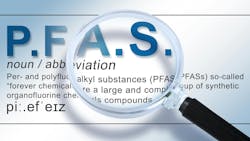EPA proposes revisions to PFAS reporting rule to ease industry burden, retain key data collection
The U.S. Environmental Protection Agency (EPA) has proposed updates to its PFAS reporting requirements under the Toxic Substances Control Act (TSCA) to streamline compliance, reduce costs for manufacturers and importers, and ensure the agency collects the most relevant data on per- and polyfluoroalkyl substances (PFAS).
The proposal revises the 2023 PFAS reporting and recordkeeping rule, which required companies that manufactured or imported PFAS between 2011 and 2022 to report detailed information about production, exposure and health impacts. EPA said the new proposal is designed to make the reporting process “more practical and implementable” while maintaining the agency’s access to key safety and use information.
According to the agency, the 2023 rule had created nearly a $1 billion compliance burden on industry and lacked clarity on how collected data would be used. The proposed revisions aim to reduce unnecessary or duplicative reporting, particularly for small businesses.
“Today’s proposal is grounded in commonsense and the law, allowing us to collect the information we need to help combat PFAS contamination without placing ridiculous requirements on manufacturers, especially the small businesses that drive our country’s economy," said EPA Administrator Lee Zeldin in a press release
The proposed rule would exempt certain low-risk activities from PFAS reporting, including:
-
PFAS in mixtures or products at concentrations of 0.1% or lower
-
Imported articles
-
Certain byproducts
-
Impurities
-
Research and development chemicals
-
Non-isolated intermediates
EPA also plans to make technical corrections to clarify reporting expectations and adjust submission timelines.
The agency said the proposal aligns with Administrator Zeldin’s April 2025 commitment to implement TSCA Section 8(a)(7) “to smartly collect necessary information… without overburdening small businesses and article importers.”
EPA’s updated proposal will be published in the Federal Register, followed by a public comment period before a final rule is issued.
